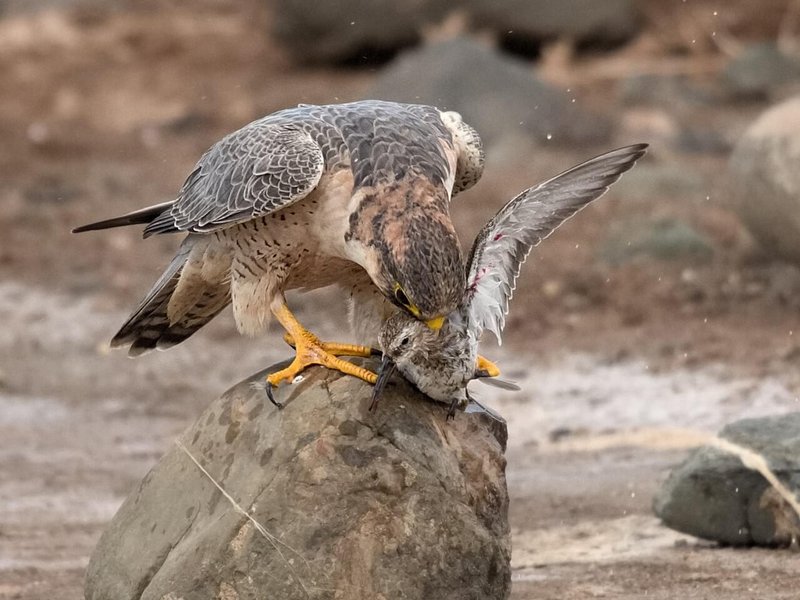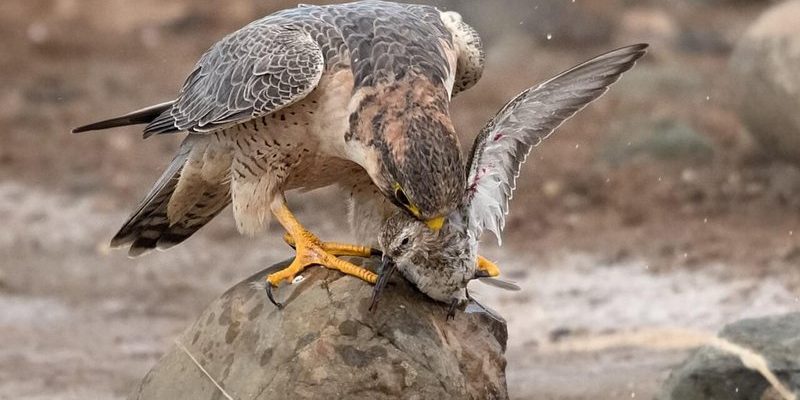
Falcons are part of a family of birds known as *Falconidae*, which includes several species, each with unique hunting styles and food preferences. Just like we have our favorite go-to foods, these birds have a menu of their own. From small mammals to insects, falcons adapt their diets based on their environment and the availability of prey. So, let’s dig into the types of food falcons eat and how they hunt or forage for their next meal.
The Falcon’s Diet: What Do They Eat?
Falcons are primarily carnivorous, meaning they eat meat. But their diet can vary quite a bit based on species and habitat. Most falcons enjoy a mix of small animals, birds, and insects. Here are some common items on the falcon’s menu:
- Birds: Many falcons, like the Peregrine falcon, target other birds. A swift dive called a “stoop” helps them catch their feathered friends mid-flight.
- Mammals: Smaller mammals like mice and rabbits are also on the menu. For instance, the Prairie falcon often hunts these critters.
- Insects: During certain seasons, falcons might even snack on insects. This is especially true for young falcons learning to hunt.
- Reptiles: Some species will hunt snakes or lizards if available. They adjust their diet to fit what’s around them.
Honestly, falcons can be quite picky eaters at times. Their hunting success often dictates what they’ll go after. Imagine checking the fridge for dinner options—you pick what looks and sounds good. Similarly, a falcon assesses its environment to choose the right prey.
How Falcons Hunt: The Art of the Stooping
One of the most thrilling aspects of a falcon’s hunting technique is the stoop. This incredible dive can reach speeds of over 200 miles per hour! Talk about fast food! Here’s how it works:
1. Spotting Prey: With their sharp eyesight, falcons can spot a meal from great distances. They can see colors and detect movement better than we can, making them excellent hunters.
2. Climbing High: Before attacking, a falcon will usually fly high above its target. From there, it can scan the area for other potential meals, too.
3. The Dive: When ready, the falcon tucks in its wings, nose-diving toward its prey. The speed and surprise of this maneuver often catch the prey off guard.
4. Grabbing the Meal: Just before making contact, the falcon stretches out its talons. This helps ensure it grabs its lunch without missing.
You might be wondering how the falcon knows when to release those talons. It’s all about timing—much like catching a ball when playing a game. Practice makes perfect!
The Role of Vision in Hunting
A falcon’s eyes are one of its greatest tools. They possess a high density of photoreceptor cells, allowing them to see incredibly well. Think of their vision like HD television, but in the natural world. Here’s how their vision helps them hunt:
– Distance Vision: Falcons can spot a mouse on the ground from hundreds of feet in the air. This ability lets them plan their attack long before they swoop in.
– Color Sensitivity: Unlike humans, falcons can see ultraviolet light. This means they can detect markings and patterns on prey that we can’t see, giving them an advantage.
– Movement Detection: Their eyes can track fast-moving objects. This skill is crucial when chasing down other birds.
Here’s the thing: their vision isn’t just for hunting. It also helps them avoid obstacles in the air, making their aerial maneuvers all the more impressive.
Foraging for Food: What Happens When Prey is Scarce?
Sometimes, falcons face food shortages. Maybe their favorite birds have migrated, or a harsh winter has impacted the local ecosystem. When this happens, they must adjust their hunting tactics. Here’s how they cope:
– Scavenging: Falcons are not above stealing a meal when the opportunity arises. They might scavenge leftovers from other predators or take advantage of any unguarded food source.
– Changing Diets: As previously mentioned, falcons will shift their diets to include whatever’s available. If birds are scarce, they’ll hunt small mammals or even insects.
– Hunting in Groups: Some species will team up with others to flush out prey. This teamwork can increase their chances of a successful hunt.
For instance, the Prairie falcon might team up with a group of other birds to drive smaller mammals out of hiding. It’s like a coordinated nature team sport.
Different Falcon Species and Their Unique Hunting Styles
Not all falcons hunt the same way. Each species has developed its unique style based on its size, habitat, and the type of prey it hunts. Let’s explore a few:
– Peregrine Falcon: Known for its speed, this bird specializes in chasing other birds mid-flight. Its stoop is unmatched!
– Kestrel: This smaller falcon often uses a hovering technique to spot prey on the ground. It can remain in one spot while scanning for food, making it quite adaptable.
– Merlin: This small, compact falcon is known for its aggressive hunting style. It often hunts in open areas, ambushing its prey with quick, fast attacks.
Each falcon species reflects its environment and dietary needs, showing how flexible and adaptable these birds can be.
Falcons play a crucial role in our ecosystems. By hunting various prey, they help keep animal populations in check and contribute to the balance of nature. Whether soaring high above the ground or diving down for a meal, these birds are remarkable hunters with a fascinating approach to survival.
Next time you see a falcon, take a moment to appreciate not just its beauty but also the incredible skills it showcases while hunting or foraging. Who knew that something so graceful could be so fierce? So, the next time you spot one in the sky, remember: it’s not just searching for a bite to eat. It’s a master in the art of the hunt!

